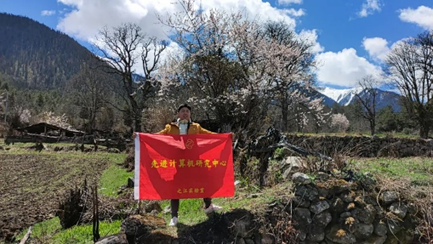Prev Post
HUANG Lixin Surveys ZJ Lab: Giving Technological Support to the Common Prosperity Demonstration Zone

Expedition Notes: Auto pilot technology is reaching L5, the ultimate level where drivers may just sit behind the wheel and see "my car drives itself". One of the preconditions, structural urban road and traffic data, has made L5 possible. However, what are the extra conditions for auto pilot in a plateau context? The unmanned vehicle program of ZJ Lab's Research Center for Advanced Computing Systems (the Center), dedicated to the research on key unmanned transporter technologies such as environment perception, navigation & positioning and route planning, on the West China plateau, set out in early April for a scientific expedition to Tibet.

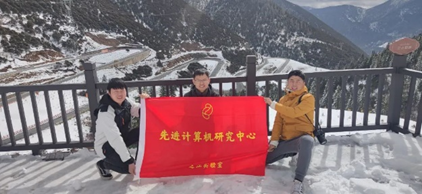
"Harsh environment and unpredictable road conditions are the greatest challenges to auto pilot. We’re going there to collect as much non-structural data as possible on the plateau and survey road sections that meet R&D demands. This would help build a sample database, define the test road sections and create the simulation environment in the future." The expedition is initiated by the program leader HU Yu. The Center's senior engineer GAO Shaobo led three members to make experiments in Tibet along G318.
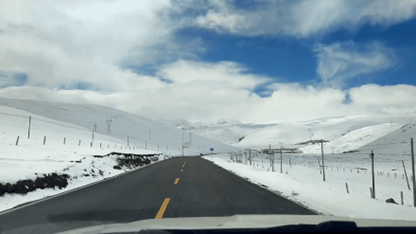
Stretching between Sichuan and Tibet, G318 runs through various landforms including plains, lofty mountains, deep valleys, rivers, grasslands and glaciers, implying various road conditions and diverse environment samples, and making it the best destination for the plateau unmanned vehicle program. The Nujiang Section, in particular, a dozen kilometers long, zigzags through mountains and the Nujiang River, undulating from 3,100 meters up to 4,651 meters and then down to 4,100 meters above sea level.
"We were ascending and were taken down by lack of oxygen. We felt as if our heads were exploding. All the way we had to take portable oxygen canisters. While descending, the increase of oxygen content caught us. We felt exhausted. We wanted nothing but sleep. Everything in the experiment was a huge challenge, physically and psychologically," said GAO Shaobo.
Suffering hypoxia, headache and shortness of breath, they hardly had sleep on the first night. "You don't always have a chance for experiments in Tibet. We must acclimatize to the altitude and make sure of the research progress." They set off at the first sunlight to gather data in the snow mountains. "Roads in Tibet are very complicated. Car accidents always happen. There are always falling stones. We almost hit one on the road." MEI Jilin, a member of the team, couldn't help recalling the hard days: "Every single day was a breathtaking challenge. Rolling stones, however, gave valuable sample data. I have to say that, from a scientific view, the more accidents, the more samples. In this sense, it was worth to take the risks.”
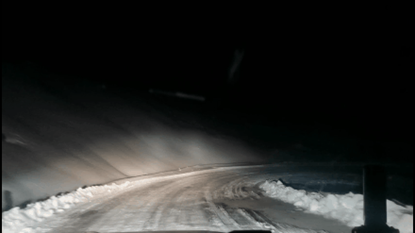
Not only human beings but also unmanned vehicles have to acclimatize to places of high altitude and scarce oxygen.
GAO Shaobo believes the first challenge is difference in temperature: "Temperature changes wildly in the western plateau. The sensors and IPC need to be keenly adaptive to a wide range of temperatures. They have to be able to protect themselves from both heat and chill." Team member ZHANG Xiao realized that, along the undulating and zigzagging high-altitude roads, antiskid device loading and unloading, sensor cleaning, as well as other auto pilot modules, have to be acclimatized reliably. MEI Jilin proved their estimates: "Roads on the plateau are distinctly different from roads in cities. For example, there would be animals. We have to identify and make decisions based on few samples. This is a brand new challenge to auto pilot on a plateau." That means, in simple words, the auto pilot system will precisely identify the abstract plateau "environment" and make precise, effective decisions to properly control the unmanned vehicles. The key to this is that they have to adapt the algorithm to the non-structural plateau environment to "mitigate" unmanned vehicles' "altitude stress".
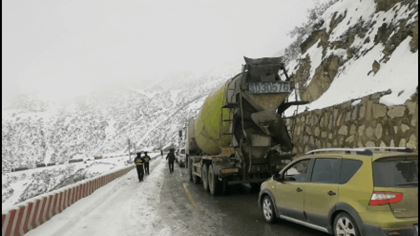
Gathering data from Tibet to build an adaptive auto pilot algorithm and then an auto pilot system for Tibet, this is the team's mission. "We saw a couple of accidents along G318, caused by snow and zigzags. They were transporter trucks. The drivers told us they'd been trapped for days in traffic jams and they had to eat and sleep on their trucks." The team wishes their unmanned plateau vehicles, once put into use, will help make plateau roads smoother, safer and more effective and bring more conveniences to Tibetan people.
In the next run, the team will consolidate the non-structural environmental sample perception database, probe into high-precision autonomous navigation and positioning, optimal route planning and accessible region real-time precise identification technologies, and provide theoretical approaches and key technologies for all-terrain, all-climate, full-automation long-distance transportation.
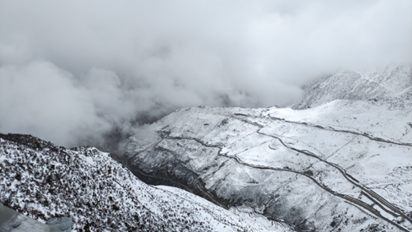
The team has a chat group named "Scientific Expedition Group". "Science means expedition. A good algorithm does not rest in offices. You have to go to the forefront to work out a result that meets actual demands and, certainly, see different views." The five-day expedition in Tibet was hard and paid back. "The zigzagging Nujiang Section challenged our physiological limits while rewarding us with astonishing views of the gorgeous snow mountains, autumn falling leaves and spring flowers all the way down the slope. We ran through winter and spring. It was like the road of science that challenges come one after another, but as long as we have the courage to go over the mountains, the spring of science is right there."
